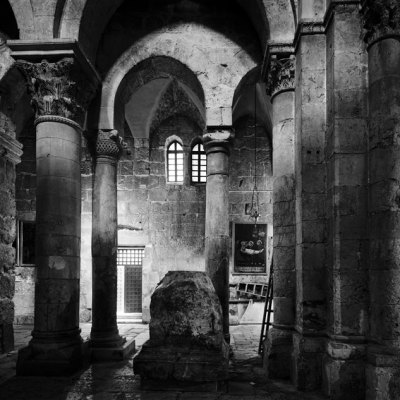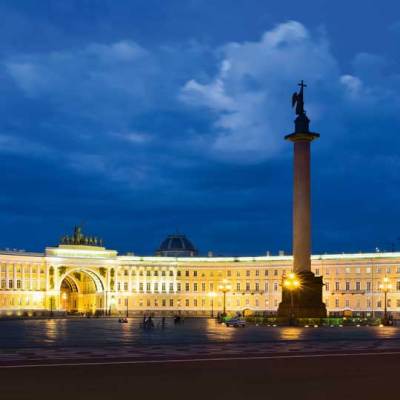‘It’s the city of the crazy,’ Yael Bartana said of Jerusalem following the viewing of her film Inferno (2013) at the Jerusalem Season of Culture late last month. The screening was held as part of Under The Mountain arts festival (25–28 August), a component of the Jerusalem Season of Culture 2015. ‘The city attracts so many different ideologies, it’s one of the most charged locations I’ve ever been to’ Bartana continued. For Under The Mountain, the artist also created a sound installation that looks at the life of a character called Simone the Hermetic.
Bartana, alongside other international and local contemporary artists, took part in Under The Mountain to give voice to the contrasting historical stories of Jerusalem and, in Bartana’s case, to suggest a future solution. ‘We don’t think it’s enough to do nothing yet sympathise with the Palestinians’, agreed the programme’s director Naomi Bloch Fortis, ‘we want to open up a dialogue that treats Jerusalem as the holy land of three religions: Muslim, Christian and Jewish’.
The result was a programme of densely charged performance pieces, all of which took part in the most historic and politically resonant parts of Jerusalem. Alongside Bartana’s work were public performance artworks by Santiago Sierra – who staged Veterans of the Wars of Israel, a seven-day piece featuring a rotating line of veteran soldiers staring into a wall on Jaffa Street in the Jewish quarter – and Shasha Dothan. ‘It would have been more powerful if there were more men’ Bartana commented of Sierra’s piece, which was true, but the set-up resonated as soldier after soldier silenty came forward to stare blankly at the wall. Sierra has staged this piece before in the US and Spain, but located in the Jewish quarter of the old city, the work took on a new potency. Sierra suggests that the contemporary Israeli-Palestinian identity is a case of law and governance over home, history or identity.
Public creativity in Jerusalem feels charged in 2015. Bartana is aware of this, and with its location at the Western Wall and a concealed viewpoint over it, her piece Simone The Hermetic felt both radical and optimistic. A five-minute video voice-over, heard while looking over the Western Wall and its steady stream of visitors and pilgrims, invited listeners to imagine themselves in the year 3615. It narrated the tale of the 1,600th anniversary of ‘Simone the Hermetic’, born 2015 in the historic city. In the story, which Bartana scripted alongside a composer, she conjures a world in which men become pregnant and a new way of being in Jerusalem is created. The work is also radical in relation to Bartana’s process. Unlike Inferno there are no lavish sets and metaphorical visuals. Instead, the Western Wall is the only backdrop. ‘We’re so overwhelmed by imagery now’ Bartana commented, ‘we never use our imagination.’
Simone The Hermetic provided a nice contrast to some of the conservative pieces in Under The Mountain, such as a visit to the house of an Israeli family who had chosen to live in the Muslim quarter of the old city, validating their decision by the rule of an old Ottoman law. Home is a concept Bartana struggles with. ‘I worked on it to become an immigrant’, she said. ‘Jerusalem is my home, I’ve been able to leave and live in Europe, but not everyone can leave their home.’ Bartana’s criticism of what she refers to as the Israeli occupation, she admits, ‘is not a popular view. But this is what I care about, and I believe that through art you can open minds.’ It took some persuading for Bartana to bring the piece to Jerusalem. ‘I believe in Palestinian solidarity, we are living in an occupied land. It was hard for me to have a work here’. The piece has a wry tone, a nod to what Bartana calls ‘Jerusalem syndrome’, in which ‘many people go through a strong spiritual transition’. ‘The idea was to get a sense of myth which is somehow based on religion.’
Most works in Under The Mountain, particularly Santiago Sierra’s Veterans of the Wars of Israel, referenced the physical burden of the Israel-Palestine wars. But one wonders whether these performances are politically radical or a faux pas. ‘It’s a special war here’ said one of the performing war veterans in Sierra’s piece. Which is undoubtedly true, however, there was an awkward, theatrical quality to the work: was this punishment or atonement? The piece certainly made the case for artistic performance as key to cultural development. So did The Pit and the Base, a work that saw the cavernous water-filled crypt of St Helena’s Coptic Orthodox Church taken over by Yonatan Levy, who had a scuba diver emerge from the water, leave the church, and walk through each quarter of the old city of Jerusalem to a police base at the gate of Temple Mount. Walking through the historic area the diver received aggressive comments and hassle. ‘Temple Mount resonates deeply for everyone in Jerusalem’, artistic director Itay Mautner commented.
The historic power of Jerusalem featured in other works, including the recreation of Allan Kaprow’s Ice Happening 1980/2015 and Shasha Dothan’s Room // Mount // House, a performance in which she invited the public into her temporary studio and then made the daily journey to the Western Wall. ‘At first people thought we were crazy’, said Mautner. ‘Going into these areas and staging art. But we wanted to open a dialogue’. The power of Jerusalem was at the forefront of Under The Mountain and the political poignancy of the city was treated with great respect. ‘We cancelled all the events we had planned last year when the war started’ director Naomi Bloch Fortis commented. ‘It was out of respect for what was happening. That was the most important thing at that time, not culture.’ Still, Under The Mountain makes a powerful case for the cohesion of both politics and culture.







